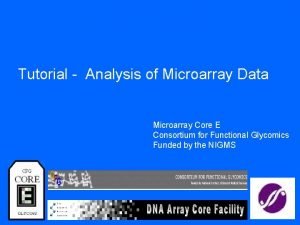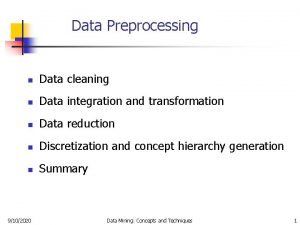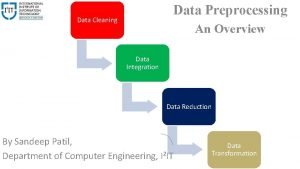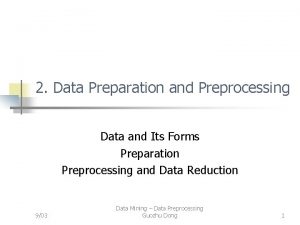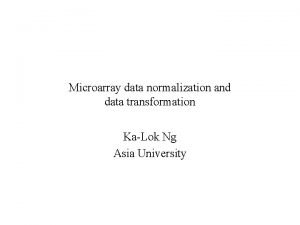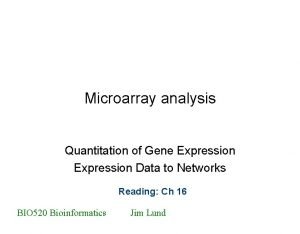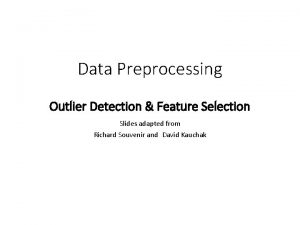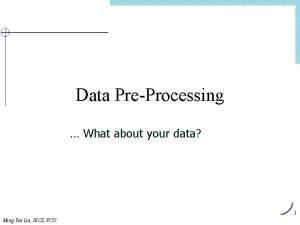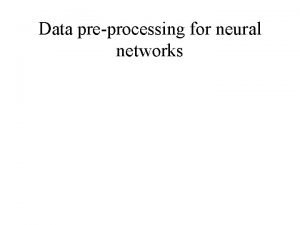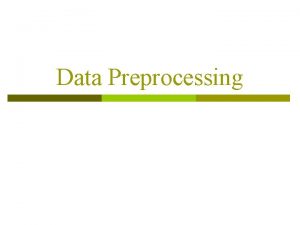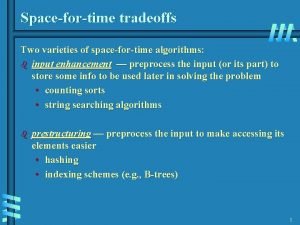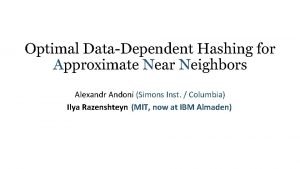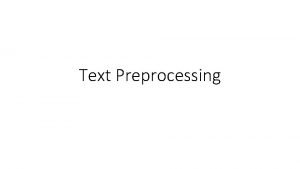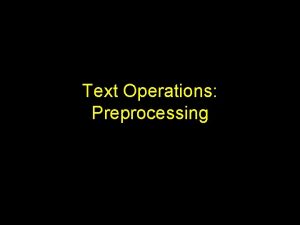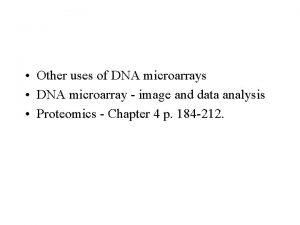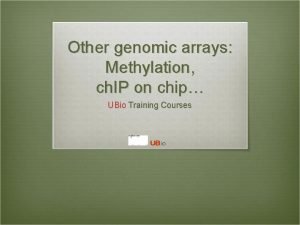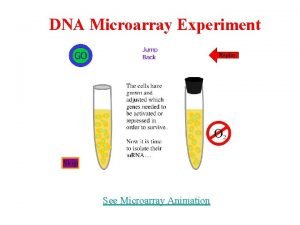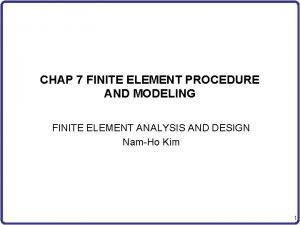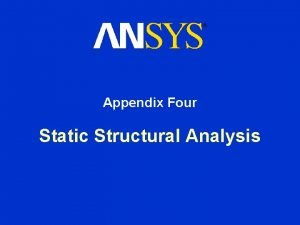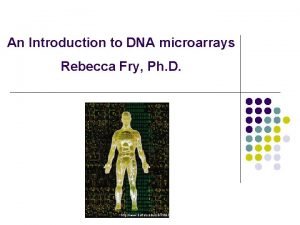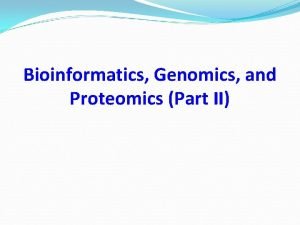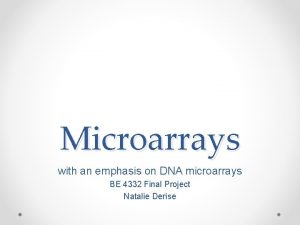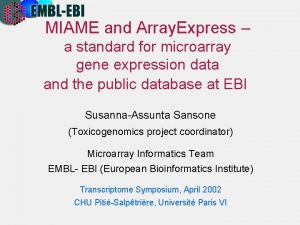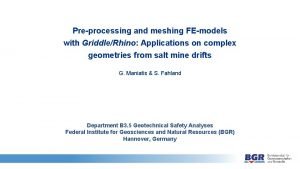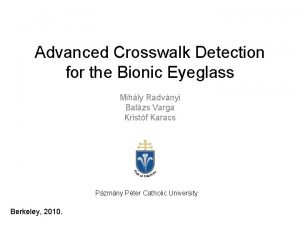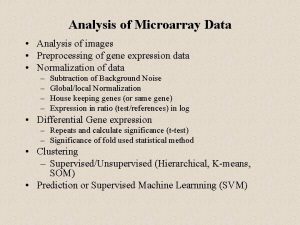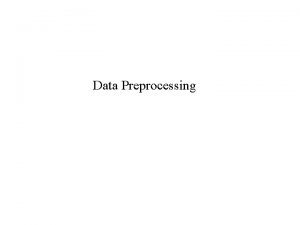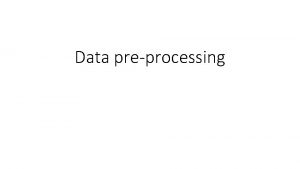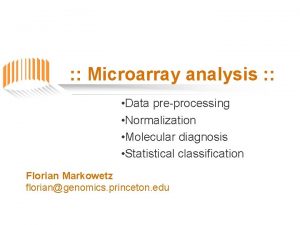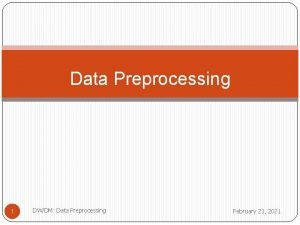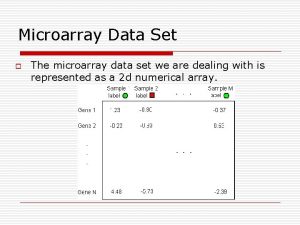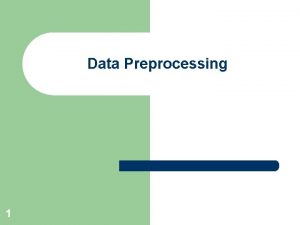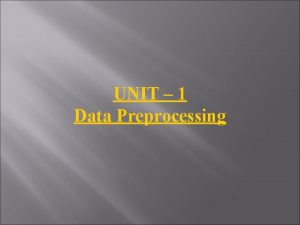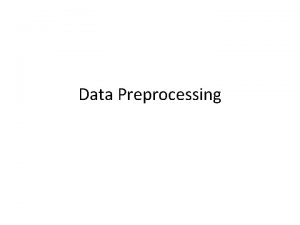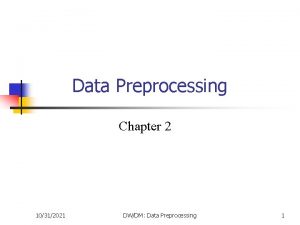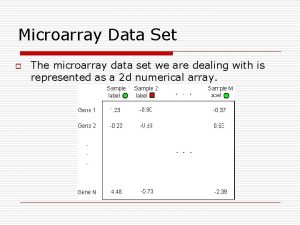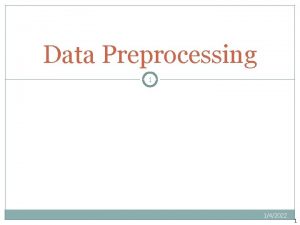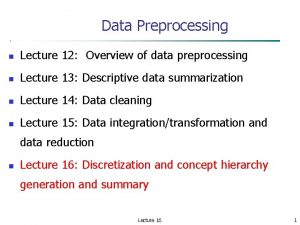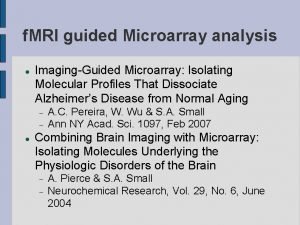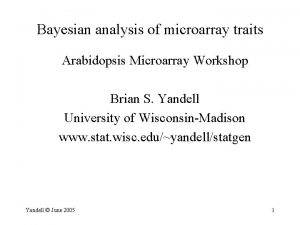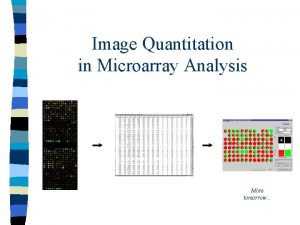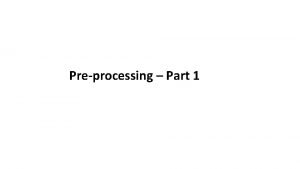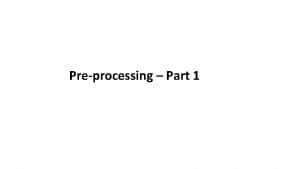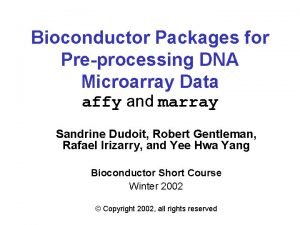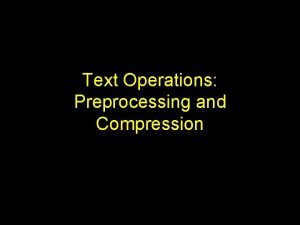Microarray Data Analysis n n Data preprocessing and
























- Slides: 24

Microarray Data Analysis n n Data preprocessing and visualization Supervised learning n n Unsupervised learning n n Machine learning approaches Clustering and pattern detection Gene regulatory regions predictions based coregulated genes Linkage between gene expression data and gene sequence/function databases …

Unsupervised learning n n Supervised methods n Can only validate or reject hypotheses n Can not lead to discovery of unexpected partitions Unsupervised learning n No prior knowledge is used n Explore structure of data on the basis of corrections and similarities

DEFINITION OF THE CLUSTERING PROBLEM Eytan Domany

CLUSTER ANALYSIS YIELDS DENDROGRAM T (RESOLUTION) Eytan Domany

BUT WHAT ABOUT THE OKAPI? Eytan Domany

Centroid methods – K-means Data points at Xi , i= 1, . . . , N Centroids at Y , = 1, . . . , K Assign data point i to centroid ; Si = Cost E: E(S 1 , S 2 , . . . , SN ; Y 1 , . . . YK ) = Minimize E over Si , Y Eytan Domany

K-means n “Guess” K=3 Eytan Domany

K-means n Start with random positions of centroids. Iteration = 0 Eytan Domany

K-means n n Start with random positions of centroids. Assign each data point to closest centroid. Iteration = 1 Eytan Domany

K-means n n n Start with random positions of centroids. Assign each data point to closest centroid. Move centroids to center of assigned points Iteration = 2 Eytan Domany

K-means n n Start with random positions of centroids. Assign each data point to closest centroid. Move centroids to center of assigned points Iterate till minimal cost Iteration = 3 Eytan Domany

K-means - Summary n Fast algorithm: compute distances from data points to centroids Result depends on initial centroids’ position n Must preset K n Fails for “non-spherical” distributions n

Agglomerative Hierarchical Clustering Need to define the distance between theclusters at each step merge pair of nearest new cluster and the other clusters. initially – each point = cluster Single Linkage: distance between closest pair. Distance between joined clusters Complete Linkage: distance between farthest pair. Average Linkage: average distance between all pairs or distance between cluster centers 4 2 5 3 1 1 3 2 4 5 The dendrogram induces a linear ordering of the data points Dendrogram Eytan Domany

Hierarchical Clustering Summary n Results depend on distance update method n Greedy iterative process n NOT robust against noise n No inherent measure to identify stable clusters n Average Linkage – the most widely used clustering method in gene expression analysis

nature 2002 breast cancer Heat map

Cluster both genes and samples n Sample should cluster together based on experimental design n Often a way to catch labelling errors or heterogeneity in samples

Epinephrine Treated Rat Fibroblast Cell ID Probe 1 h 5 h 10 h 18 h 24 h 1 D 21869_s_at 25. 7 55. 0 170. 7 305. 5 807. 9 2 D 25233_at 705. 2 578. 2 629. 2 641. 7 795. 3 3 D 25543_at 2148. 7 1303. 0 915. 5 149. 2 96. 3 4 L 03294_g_at 241. 8 421. 5 577. 2 866. 1 2107. 3 5 J 03960_at 774. 5 439. 8 314. 3 256. 1 44. 4 6 M 81855_at 1487. 6 1283. 7 1372. 1 1469. 1 1611. 7 7 L 14936_at 1212. 6 1848. 5 2436. 2 3260. 5 4650. 9 8 L 19998_at 767. 9 290. 8 300. 2 129. 4 51. 5 9 AB 017912_at 1813. 7 3520. 6 4404. 3 6853. 1 9039. 4 10 M 32855_at 234. 1 23. 1 789. 4 312. 7 67. 8

Heap map Correlation coeff Normalized across each gene

Distance Issues n Euclidean distance g 1 g 3 g 2 g 4 ■ Pearson distance

Exercise n Use Average Linkage Algorithm and Manhattan distance. Gene ID 1 2 3 Exp 1 45 55 148 Exp 2 55 78 1303 4 5 6 241 774 607 765 439 383

Exercise

Issues in Cluster Analysis A lot of clustering algorithms n A lot of distance/similarity metrics n Which clustering algorithm runs faster and uses less memory? n How many clusters after all? n Are the clusters stable? n Are the clusters meaningful? n

Which Clustering Method Should I Use? What is the biological question? n Do I have a preconceived notion of how many clusters there should be? n How strict do I want to be? Spilt or Join? n Can a gene be in multiple clusters? n Hard or soft boundaries between clusters n

The End n Thank you for taking this course. Bioinformatics is a very diverse and fascinating subject. We hope you all decide to continue your pursuit of it. n We will be very glad to answer your emails or schedule appointments to talk about any bioinformatics related questions you might have. n We wish you all have a wonderful summer break!
 Glycov
Glycov Etl in data cleaning and preprocessing stands for
Etl in data cleaning and preprocessing stands for Entity identification problem in data integration
Entity identification problem in data integration Data preparation and preprocessing
Data preparation and preprocessing Microarray data normalization and transformation
Microarray data normalization and transformation Microarray analysis
Microarray analysis Data preprocessing examples
Data preprocessing examples Aggregation in data preprocessing
Aggregation in data preprocessing Neural network data preprocessing
Neural network data preprocessing Major tasks in data preprocessing
Major tasks in data preprocessing Password hashing and preprocessing
Password hashing and preprocessing Password hashing and preprocessing
Password hashing and preprocessing Image url to text
Image url to text Text operation
Text operation Uses of dna microarray
Uses of dna microarray Methylation & chip-on-chip microarray platform
Methylation & chip-on-chip microarray platform Dna microarray animation
Dna microarray animation Finite element example
Finite element example Image preprocessing
Image preprocessing Rna quality control
Rna quality control Protein microarray
Protein microarray Dna microarray
Dna microarray Microarray
Microarray Preprocessing fem
Preprocessing fem Preprocessing in image processing
Preprocessing in image processing
